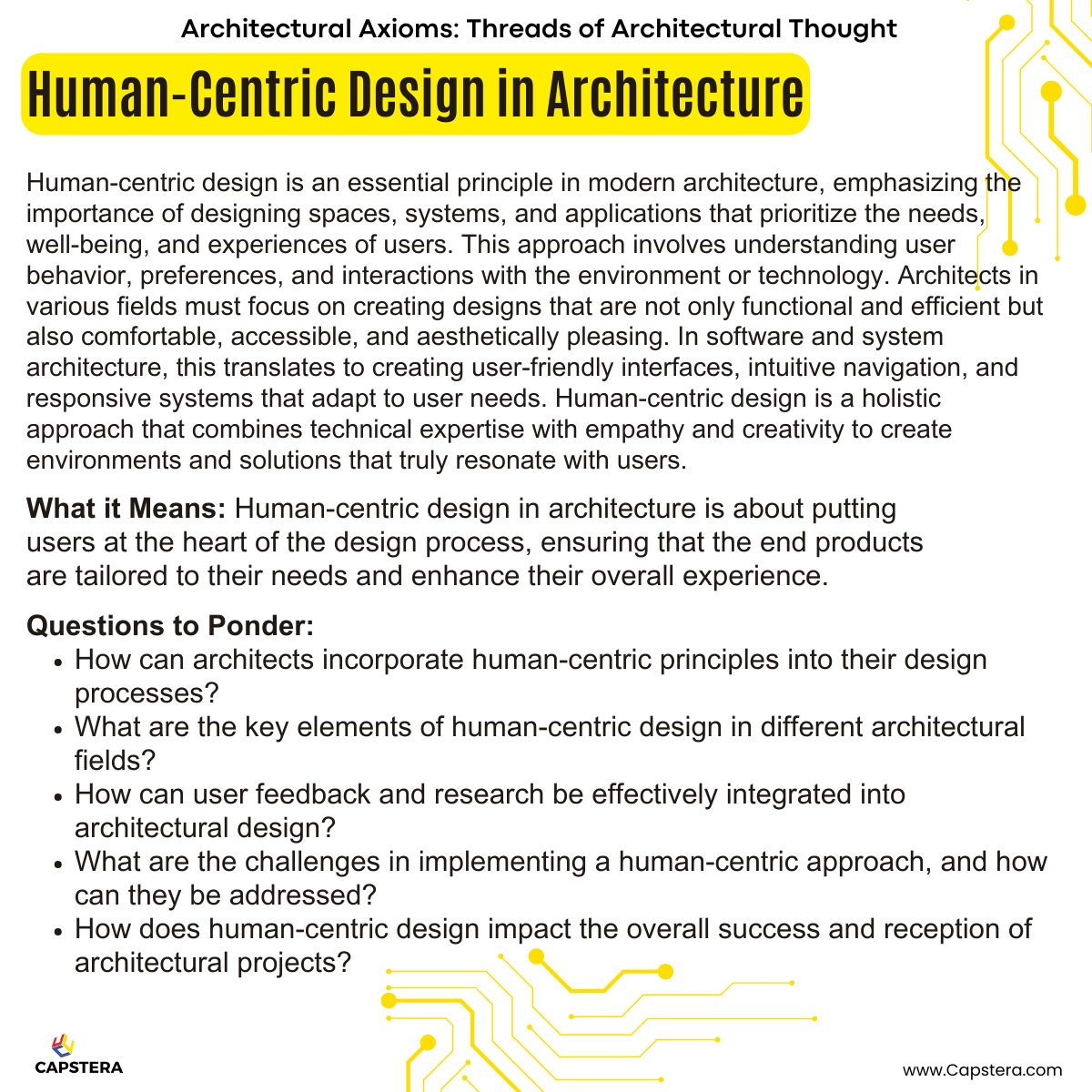
Human-centric design is an essential principle in modern architecture, emphasizing the importance of designing spaces, systems, and applications that prioritize the needs, well-being, and experiences of users. This approach involves understanding user behavior, preferences, and interactions with the environment or technology. Architects in various fields must focus on creating designs that are not only functional and efficient but also comfortable, accessible, and aesthetically pleasing. In software and system architecture, this translates to creating user-friendly interfaces, intuitive navigation, and responsive systems that adapt to user needs. Human-centric design is a holistic approach that combines technical expertise with empathy and creativity to create environments and solutions that truly resonate with users.
What it Means: Human-centric design in architecture is about putting users at the heart of the design process, ensuring that the end products are tailored to their needs and enhance their overall experience.
Questions to Ponder:
- How can architects incorporate human-centric principles into their design processes?
- What are the key elements of human-centric design in different architectural fields?
- How can user feedback and research be effectively integrated into architectural design?
- What are the challenges in implementing a human-centric approach, and how can they be addressed?
- How does human-centric design impact the overall success and reception of architectural projects?
